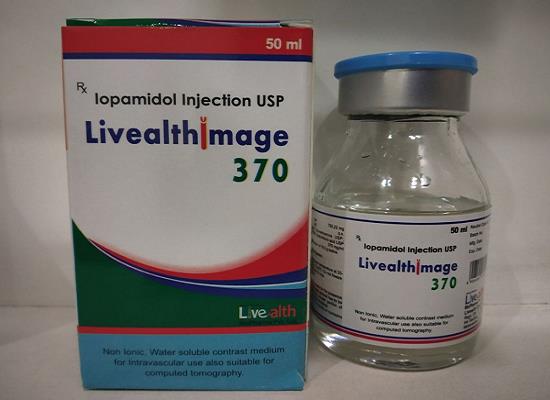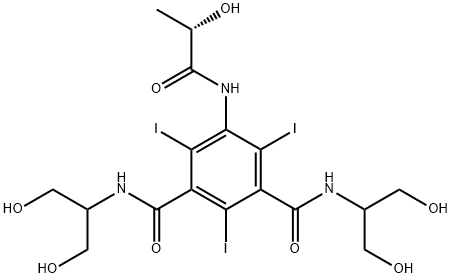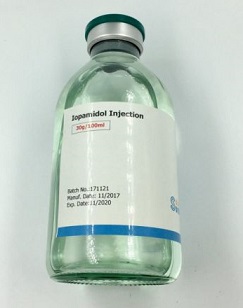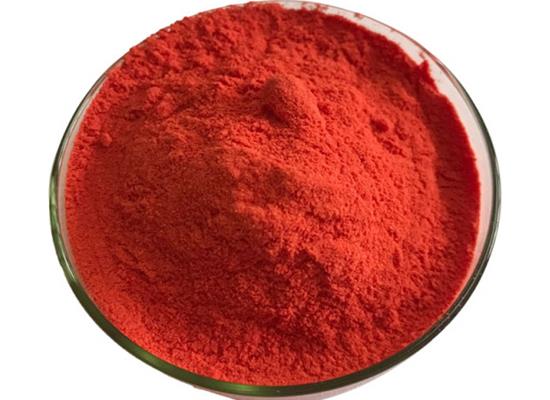Iopamidol: properties, applications and safety
General Description
Iopamidol is a valuable non-ionic, water-soluble contrast agent widely used in medical imaging procedures such as CT scans and angiography. Its low osmolality reduces the risk of adverse reactions, making it safer for patients, while also providing excellent radiographic contrast enhancement for clear visualization of anatomical structures. Rapid distribution and excretion from the body contribute to shorter examination times and improved patient comfort. Iopamidol's stability in solution and compatibility with injection systems further enhance its reliability. Rigorous testing and clinical trials have demonstrated its generally well-tolerated nature when used appropriately, and advancements in medical technology and professional expertise contribute to its safe administration.

Figure 1. Injection of iopamidol
Properties
Iopamidol is a non-ionic, water-soluble contrast agent and its unique characteristics make it a valuable tool for enhancing the visibility of blood vessels and organs during diagnostic examinations. Firstly, Iopamidol has a low osmolality, which reduces the risk of adverse reactions compared to high-osmolar contrast agents. This makes it safer for patients, particularly those with underlying health conditions or a history of sensitivity to contrast agents. Secondly, Iopamidol provides excellent radiographic contrast enhancement, allowing for clear visualization of anatomical structures and abnormalities. Its rapid distribution and excretion from the body contribute to shorter examination times and improved patient comfort. Additionally, Iopamidol exhibits stability in solution, ensuring consistent performance and reliable results for healthcare providers. Its compatibility with injection systems and ease of handling further contribute to its widespread use in medical practice. In summary, Iopamidol's low osmolality, superior contrast enhancement, rapid clearance, and stability make it a preferred choice for diagnostic imaging procedures, benefiting both patients and healthcare professionals. 1
Applications
Iopamidol is a widely used contrast agent in medical imaging procedures. It belongs to the class of non-ionic iodinated contrast media and is primarily used in X-ray examinations, such as computed tomography (CT) scans and angiography. In CT scans, Iopamidol helps enhance the visibility of blood vessels, organs, and tissues. It is injected into the patient's bloodstream prior to the scan, allowing the radiologist to obtain detailed images of the internal structures of the body. This aids in the diagnosis and evaluation of various medical conditions, including tumors, injuries, infections, and abnormalities. Furthermore, Iopamidol plays a crucial role in angiography, a procedure that visualizes blood vessels and their abnormalities. By injecting Iopamidol directly into the blood vessels, doctors can accurately identify blockages, aneurysms, or other vascular conditions. This information helps guide treatment decisions, such as the need for surgery or interventional procedures like stenting or embolization. Overall, the versatile applications of Iopamidol have significantly improved the accuracy and effectiveness of diagnostic imaging techniques, ultimately leading to better patient care and outcomes. 2
Safety
Iopamidol is a commonly used contrast agent in medical imaging procedures. Ensuring the safety of this substance is of paramount importance in order to minimize potential risks to patients. Firstly, Iopamidol has undergone rigorous testing and clinical trials to assess its safety profile. These studies have demonstrated that when used appropriately and with proper dosage guidelines, Iopamidol is generally well-tolerated by patients. Adverse reactions are rare and typically mild, including nausea, vomiting, and allergic reactions. However, severe reactions such as anaphylaxis can occur, although they are extremely rare. Secondly, healthcare professionals are trained to administer Iopamidol safely. They carefully evaluate each patient's medical history and assess the risk factors before administering the contrast agent. This helps to identify individuals who may be more prone to adverse reactions and allows for appropriate precautions to be taken. Furthermore, advancements in medical technology and improved imaging equipment have contributed to the safe use of Iopamidol. Lower concentrations and volumes of the contrast agent are now used, reducing the overall exposure to the substance and minimizing potential side effects. In conclusion, Iopamidol is considered a safe contrast agent when used according to established guidelines. The extensive research, professional expertise, and technological advancements in medical imaging contribute to ensuring the safety of patients undergoing procedures involving Iopamidol. 3
Reference
1. Drugs and Lactation Database (LactMed?) [Internet]. Bethesda (MD): National Institute of Child Health and Human Development; 2006–. Iopamidol. 2022, 30.
2. Kawada TK. Iohexol and iopamidol: second-generation nonionic radiographic contrast media. Drug Intell Clin Pharm. 1985, 19(7-8): 525-529.
3. Filatov DN, Cherkavskaia OV, Korobkova IZ. [Iopamidol is a safe choice in the practice of diagnostic imaging]. Vestn Rentgenol Radiol. 2011, 3: 69-72.
Related articles And Qustion
See also
Lastest Price from Iopamidol manufacturers

US $2.00-5.00/kg2025-07-11
- CAS:
- 60166-93-0
- Min. Order:
- 1kg
- Purity:
- 99%
- Supply Ability:
- 100kg

US $1.10/g2021-08-14
- CAS:
- 60166-93-0
- Min. Order:
- 1g
- Purity:
- 99.9%
- Supply Ability:
- 100 Tons min



